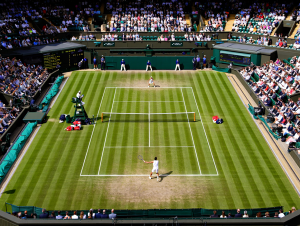
In mid‑2025, McLaren asserted itself at the forefront of Formula 1—not only in race results but also in technical intrigue. With five wins in the first six rounds of the season, questions emerged about how the MCL39 was preserving tyre performance over race distance. Thermal imaging analyses of McLaren’s brake assemblies raised eyebrows, particularly among rival teams like Red Bull, who intimated the use of clandestine cooling tricks. However, FIA inspections revealed nothing illegal, leaving the paddock buzzing with speculation.
Enter phase‑change materials, or PCMs—substances designed to absorb heat while undergoing a physical transformation (e.g., from solid to liquid), maintaining a stable melting point in the process. A recent theory, resurrected from 2017 research by McLaren engineer and aerodynamics specialist Martin Buchan, suggests PCMs have been integrated into McLaren’s rear brake drum linings formula1.com+12news.com.au+12planetf1.com+12planetf1.com.
- PCMs can act like thermal sponges—much like ice in water, absorbing heat at a constant temperature during phase transition .
- In McLaren’s case, the melt‑point could be tuned to match the optimal tyre temperature window (75–95 °C), limiting heat transfer from brakes to wheel rims and tyres driver61.com.
By stabilizing tyre temperatures, drivers benefit from consistent grip and reduced degradation lap after lap—a critical advantage in race pace and longevity.
FIA Technical Constraints and Sporting Regulation Loopholes
Technical Regulation Context
Under Article 15.4.1(b) of the FIA’s technical regulations, shape‑memory and phase‑change materials that change shape under uniform thermal stimuli are technically disallowed reddit.com+13the-race.com+13driver61.com+13. However, PCMs that change physical state without mechanical actuation might sidestep this provision.
More pertinent is Article 11.5, which forbids liquid cooling of brakes, and Article 10.8.4, which prohibits any device or system—active or passive—that maintains tyre, wheel, or brake temperatures above ambient the-race.com. The key question: Do PCMs constitute cooling, or are they purely passive thermal buffers?
Opponents argue any phase-driven temperature modulation is akin to cooling unless explicitly permitted. Meanwhile, proponents suggest PCMs only absorb heat passively, releasing it when temperatures fall—no active cooling involved.
Sporting Regulations: A Loophole in Placement
Distinct from technical rules, the 2025 FIA Sporting Regulations emphasize Article 43 on start procedures and car conduct, leaving no explicit reference to brake component placement or materials. That transparency is what teams may exploit when fitting PCM packages.
Teams cannot add electronics or actuators to brake systems—they’d be stripped at scrutineering. However, a purely passive PCM insert, concealed inside the brake drum’s sealed internal shell, might avoid detection. The brake drum’s internal assembly is less frequently inspected by FIA over team protests, making it a prime location for a stealthy PCM module. Engineer Buchan even notes, “who looks inside a drum cover?” motorsportweek.com+2motorsport.com+2autosport.com+2speedcafe.com.
Drafting an “Upgrade”: From Test to Track
To introduce PCMs mid‑season, a team must introduce the technology in line with Article 12—the homologation of parts. Notably, some parts are considered upgradeable; provided they fit an existing homologated component’s footprint or inner-space and are not performance-banned material, teams can detail them as optional during scrutineering.
In this scenario:
- PCM pad unit qualifies as a backup/optional brake-drum liner. No displacement of homologated hardware occurs—just a swap-in PCM insert.
- Because it’s internal, sealed, and unactuated, it may not be flagged under “device,” “system,” or “procedure” banned provisions.
- FIA could test only standard materials—steel, aluminium—as per homologation, missing advanced PCM composites unless they physically disassemble the drum.
Hence, the installation could be technically legal as an upgrade package, so long as it traverses homologation correctly, stays passive, and aligns dimensionally.
Anti‑Dive Suspension: McLaren’s Parallel Path
McLaren’s technical ingenuity extends beyond tyre thermals. Another breakthrough is evident in their anti‑dive front suspension geometry—a radical kinematic setup that keeps the car’s aerodynamic floor platform flatter under braking reddit.com+7reddit.com+7timesofindia.indiatimes.com+7formula1.com+1reddit.com+1.
- Benefits: Enhanced aero consistency, less floor pitch, potentially better grip and predictability.
- Trade-offs: Increased structural loads, reduced steering feel—Lando Norris has noted the car feels less communicative formula1.com.
- Solution: McLaren tailored dual anti‑dive geometries—one aggressive for Piastri (straight-line focused), one milder for Norris (feedback-sensitive) planetf1.com+3formula1.com+3en.wikipedia.org+3.
This anti‑dive geometry and PCM brake drum combo could form a synergistic package: stable aero under braking plus maintained tyre health.
The Ethical and Regulatory Debate
Is PCM in brake drums cooling? The FIA could argue yes. But because PCMs are passive and hidden, proving a breach of Articles 11.5 or 10.8.4 is not straightforward. Critics claim any temperature-buffering system is effectively a tyre heating or cooling device. Proponents counter with:
“It’s completely passive—no actuator, no electricity, and who looks inside a drum cover?” the-race.comspeedcafe.com
If declared as spare internal liners with new composite spec, teams could convince the FIA they’re new homologated materials—and not a performance-enhancing device. Notably, FIA already scrutinized McLaren’s drums post-Miami and found no violations. And no technical directive has since banned PCMs in drums—suggesting the loophole remains.
That could explain why Red Bull’s public complaints haven’t forced a ban, while McLaren continues to roll out performance upgrades.
Competitive Significance
The advantage is no bluff. Races like Miami, where ambient temperatures soar, have highlighted McLaren’s thermal control. Oscar Piastri and Lando Norris have stretched tyre life notably further than their rivals—gaining up to 30 seconds over race distance in extreme conditions reddit.com+1reddit.com+1news.com.au+1planetf1.com+1.
A passive PCM‑equipped brake drum ensures:
- Reduced tyre overheating: fewer graining incidents, maintained pressures, steadier thermal degradation.
- Longer stints: fewer pit stops or less aggressive strategies.
- Aero stability: pairing with anti‑dive geometry means fewer pitch-related aero losses under braking.
Together, they comprise a holistic performance leap—thermal control, aero consistency, and suspension stability.
Will FIA Intervene?
The governing body could respond by:
- Rewriting Article 15 to explicitly ban PCMs in brake assemblies.
- Issuing a Technical Directive declaring PCM fittings as “devices or systems” under cooling prohibitions.
- Mandating teams to provide unmodified drum internals during scrutineering.
Yet to date, no such directive has been issued. The closest is the banning of active cooling or phase-shape memory materials under technical rules, but an internal PCM hidden within a drum may sidestep those definitions.
Conclusion: Innovation or Grey‑Area Gaming?
As Formula 1 continues to evolve in a tightly regulated era, the line between innovation and regulation breach grows finer. McLaren’s intelligent use of anti-dive suspension geometry, alongside the potential rollout of passive PCM brake liners, exemplifies this competitive frontier.
By integrating both systems as legal homologated upgrades, McLaren could argue it simply leveraged materials science. Critics will continue to challenge, urging the FIA to step in and clarify. But until a technical directive or clear regulation deletion occurs, McLaren’s approach—off the radar yet rooted in legitimate engineering—may remain their stealth advantage.
For now, McLaren leads the way, not just with raw pace, but with savvy technical cunning—a reminder that in F1, small margins are won in the invisible gaps of regulations.



